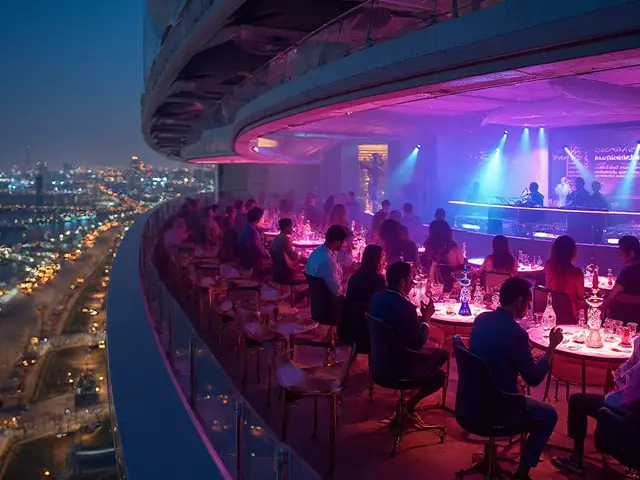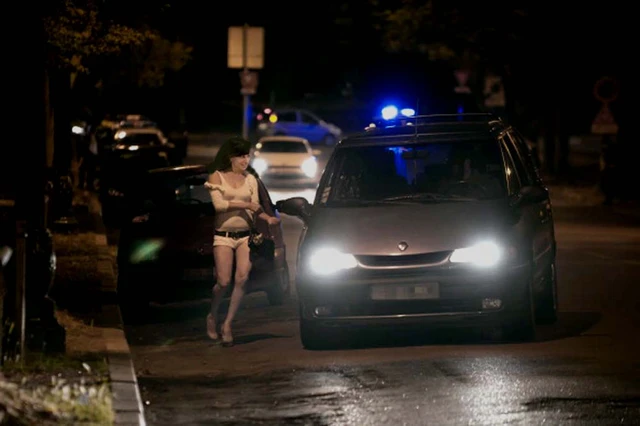Berlin has always moved to its own rhythm. While many think of its techno clubs, political history, or street art, few realize how deeply companionship has been woven into its cultural fabric - not as a side note, but as a quiet, powerful thread running through decades of change. The city’s most iconic escorts weren’t just service providers; they were witnesses, confidants, and sometimes even architects of Berlin’s shifting identity.
The Weimar Era: Freedom Worn as a Crown
In the 1920s, Berlin was the glittering, chaotic heart of Europe. After the war, old rules collapsed. Women danced in short skirts, men kissed in public, and nightlife never slept. Among the smoke-filled cabarets and jazz bars, escorts like Ellen Richter became legends. She didn’t just accompany wealthy industrialists - she introduced them to avant-garde artists, smuggled political pamphlets in her clutch, and hosted secret salons in her Kreuzberg apartment. Her clients included poets, spies, and future Nazi officials. She knew everyone, and no one knew her real name. Her power came not from money, but from access - to secrets, to rooms, to people who could change history.
By 1930, Berlin had over 20,000 registered sex workers. But the real icons weren’t the ones on street corners. They were the ones in velvet-draped parlors, speaking five languages, reading Nietzsche between cocktails, and turning companionship into an art form. The city didn’t just tolerate them - it celebrated them, until the Nazis came.
The Shadow Years: Survival in Silence
Under Hitler, everything changed. Homosexuality was criminalized. Jewish women disappeared. Escorts who didn’t fit the Aryan ideal were sent to camps. But even then, Berlin’s underground kept going. Women like Anna K., a former opera singer turned clandestine companion, moved between safe houses in Charlottenburg and Mitte. She didn’t take money from Nazis - she took information. Her clients included high-ranking officers who confided in her, thinking she was just another pretty face. She passed notes to resistance groups hidden in perfume bottles. Her story was never written in books. But after the war, survivors whispered her name in cafés near the Brandenburg Gate.
During the Cold War, Berlin split in two. In West Berlin, the U.S. military presence brought new demand. In East Berlin, the Stasi kept tabs on every stranger. Escorts became tools of surveillance - and sometimes, weapons. A woman named Monika Vogel worked in the GDR’s state-run “cultural liaison” program. Officially, she was a translator for foreign diplomats. Unofficially, she was assigned to keep visiting Western businessmen and journalists talking late into the night. She never betrayed them. Instead, she gave them maps to hidden jazz clubs and warned them when the Stasi were watching. Her reward? A quiet life after reunification, working as a librarian.
Post-Reunification: From Marginal to Mainstream
After the Wall fell, Berlin exploded - not just with music, but with new ideas about freedom, identity, and intimacy. The 1990s saw a rise in independent escorts who rejected the old models. No more brothels. No more pimps. Just women (and men) renting apartments, building websites, and setting their own rates. One of the most talked-about figures was Julia von Lichtenberg, a former philosophy student who started offering “intellectual companionship.” She didn’t advertise sex. She advertised conversation. Her clients came for debates on Foucault, for dinner in Tiergarten, for silence beside the Spree at dawn. She charged €200 an hour. Some left crying. Others left with new perspectives. She never took a photo with a client. Her only rule: “No one leaves feeling smaller than when they came.”
By 2010, Berlin had one of the highest ratios of independent escorts per capita in Europe. Unlike in other cities, they weren’t hidden. They appeared in art galleries, wrote columns for Der Tagesspiegel, and gave TEDx talks on autonomy and dignity. The city didn’t just accept them - it started to honor them.
The Modern Icons: Who Still Defines Berlin’s Scene?
Today, Berlin’s most respected escorts are those who blend tradition with radical self-determination. Lea M., a 38-year-old former nurse, runs a boutique service focused on trauma-informed companionship. Her clients include war veterans, grieving widowers, and CEOs with burnout. She doesn’t do sex work. She does human work. “I hold space,” she says. “Sometimes that’s all someone needs.”
Then there’s Rafael K., one of the few openly transgender male escorts in the city. He’s been featured in Spiegel and Die Zeit. He doesn’t see himself as a commodity. He sees himself as a mirror - reflecting back the loneliness, desire, and vulnerability that so many are too afraid to name. His clients pay €300 for a night of honest talk, a walk through the East Side Gallery, or just sitting together while rain taps on the window.
What makes these modern icons different? They don’t sell time. They sell truth. And Berlin, more than any other city, has always rewarded that.
Why Berlin? Why Them?
Other cities have escorts. But only Berlin turned them into cultural symbols. Why? Because Berlin doesn’t ask people to be perfect. It asks them to be real. The city has seen empires rise and fall, walls go up and down, ideologies crush and collapse. Through it all, the people who kept showing up - the ones who listened, who held hands in silence, who offered comfort without judgment - became part of its soul.
These women and men didn’t seek fame. They sought connection. And in a city that’s spent a century rebuilding itself from ruins, that’s the most powerful thing you can offer.
What They Taught Berlin
They taught Berlin that intimacy isn’t transactional - it’s transformative. That loneliness doesn’t need fixing. Sometimes, it just needs someone to sit with you. That power doesn’t always come from a title, a bank account, or a uniform. Sometimes, it comes from knowing when to speak - and when to stay quiet.
Walk through the streets of Mitte or Prenzlauer Berg today. Look at the cafes where people sit alone, reading, sipping coffee. Many of them have been in the rooms where these legendary companions sat. They didn’t know it then. But now, they carry a piece of that legacy - the quiet understanding that being seen, even for an hour, can change everything.
Were escorts legal in Berlin during the Nazi era?
No. The Nazi regime criminalized prostitution and targeted sex workers, especially those who were Jewish, Romani, or LGBTQ+. Many were arrested, sent to concentration camps, or forced into silence. Independent companionship became a dangerous act of resistance.
Are modern escorts in Berlin still considered taboo?
Not really. While stigma still exists, Berlin has one of the most progressive attitudes in Europe. Many escorts operate legally as self-employed professionals. Some are featured in mainstream media, and others run successful businesses with full-time staff. The city recognizes their work as legitimate labor.
Do Berlin escorts still serve political figures today?
Not openly, and not in the way they did during the Cold War. But discreet companionship remains part of diplomatic and business culture. Many high-profile clients - from politicians to tech founders - still seek private, non-sexual companionship for networking, emotional support, or simply quiet conversation.
What’s the difference between an escort and a prostitute in Berlin?
Legally, there’s no difference - both are legal under Germany’s Prostitution Act. But culturally, the distinction matters. Many modern escorts in Berlin emphasize companionship: conversation, shared experiences, emotional presence. They often avoid direct sexual services, or only offer them under strict consent boundaries. The term “escort” now often signals a higher level of agency, professionalism, and choice.
Can you visit places associated with these legendary companions today?
Yes. Many of the old cabarets and apartments are gone, but you can visit sites like the KitKatClub in Kreuzberg (a modern spiritual successor), the Berlin Wall Memorial where Monika Vogel once walked, or the St. Elisabeth Cemetery, where some unmarked graves of forgotten companions lie. There’s no official tour - but locals know where to look.
Where to Go Next
If you want to understand Berlin’s soul, don’t just visit its museums. Sit in a café near the Landwehrkanal. Talk to someone who’s lived here for decades. Ask about the people who kept the city breathing during its darkest hours. You might not hear their names. But you’ll feel their presence - in the quiet spaces between words, in the way strangers still look out for each other.
That’s the real legacy of Berlin’s most iconic escorts. Not in headlines. Not in photos. But in the spaces between - where humanity still finds a way to show up.


